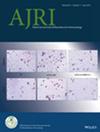Evidence for Complement Activation in Preeclampsia Placenta and Its Presence in Circulation
Abstract
Problem
Preeclampsia (PE) is a severe pregnancy disorder caused by a multitude of dysregulated events, including placental insufficiency, inflammation, anti-angiogenic factors, and cellular stress signals. Inflammatory activation of the complement cascade has also been thought to be a contributory factor to PE pathophysiology. However, the placental and circulating presence of activated complement factors and their precise impact on gestational age-dependent trophoblast health remain inadequately addressed.
Method of Study
Complement activation was assessed in placental tissue samples from women with normal pregnancy (NP) and PE. Immunofluorescent staining was employed to detect the membrane attack complex (MAC) deposition in placental tissues. This approach was also used in placenta-derived human extravillous trophoblast cells derived from the third trimester (TCL1) and first trimester (HTR-8) and term primary human cytotrophoblasts. Dual staining with Propidium Iodide (PI) and annexin V antibody was conducted to assess cell viability in TCL-1 cells, HTR-8 cells, and freshly isolated term primary human trophoblasts when exposed to serum samples from NP (NPS), PE (PES), and PES after complement inactivation by heating, heparin treatment, or blockade with antibodies. The expression levels of complement regulatory proteins, specifically decay-accelerating factor (CD55), protectin (CD59), and membrane cofactor protein (CD46), on trophoblasts were quantified using Fluorescence-activated cell sorting and immunohistochemistry.
Results
Substantial MAC deposition and a notable reduction in CD55 expression in the PE placenta compared to that from NP was observed, indicating heightened complement activation and impaired complement regulation in PE. Exposure to a significant subpopulation of PES (41%, n = 41) induced cell death exclusively in TCL-1 cells, not in HTR-8 cells and primary human trophoblasts. Remarkably, complement inactivation in PES abolished MAC deposition and rescued TCL-1 cells from death, unequivocally implicating complement activity in trophoblast cell demise. Flow cytometry analysis disclosed lower levels of CD55 and CD59 expression in TCL-1 cells in contrast to HTR-8 cells and primary human trophoblasts. Blockade of CD55 and CD59 in HTR-8 cells enhanced their susceptibility to PES-induced cell death.
Conclusions
These findings underscore the significance of amplified complement activation, compromised complement inhibitory regulation, and consequent trophoblast cell death as potential contributors to the pathogenesis of PE. Strategies targeting dysregulated complement activity offer promising avenues for novel therapeutic interventions in PE management.

 求助内容:
求助内容: 应助结果提醒方式:
应助结果提醒方式:


